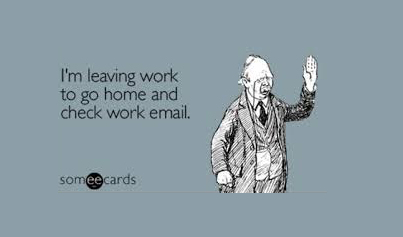
 Last month I spoke to an executive networking group about work/life balance. I initially felt some resistance towards the topic.
Last month I spoke to an executive networking group about work/life balance. I initially felt some resistance towards the topic.
My thoughts went … really? Are we still talking about this? Are people still wanting to figure this out? Yes. Yes they are. It’s nearly always on the agenda with my executive coaching clients who balance the tightrope of working hard and achieving their definitions of success, whilst managing their own time and personal relationships to ensure ‘balance’.
As I reflected on my own journey over the past 15 yeas, I see that the way I manage time and achieve balance has certainly changed as life and priorities change.
In my early 20’s it was all about building a career, driving and working as hard as I could to achieve work success and results. In my late 20’s it was about having a family, whilst managing an executive career and proving that I can have both and in my 30’s it is very much about building a business and lifestyle where I am doing what I enjoy, I like the people I work with and it doesn’t feel like ‘work’ – it is an all encompassing approach to work and life. In my view, they aren’t separate. The way of the world isn’t like that anymore with technology and accessibility and for me that’s okay; I embrace it and use it to my advantage to thrive. Everyone’s definition of balance is different and how we achieve it is also going to differ from one person to the next.
Along my journey I’ve learnt that to get to my place of harmony requires a combination of practical techniques, mindset and continual learning and reassessment.
- I’m Accessible – I don’t believe in black and white rules of turning my phone off or no work on the weekends or not checking emails on holidays. I love what I do; I’m engaged with my clients and love achieving results. So this means I can work anywhere, I can take a call at night or answer my emails when I can’t sleep and that’s okay. Being accessible gives me flexibility and balance at all times.
- Be present – when you commit to something – a coffee catch up, a networking event, a meeting, a phone call – whatever it is, being present is something I try really hard to do. I imagine I’m in a bubble and there is nothing else there – that there are no deadlines, no problems or worries. The only thing that matters in that moment is the person I am with and the commitment I have made to myself and them, to show up and be my best self. If you feel yourself struggling in this type of situation, then it is an opportunity to reassess what you are saying yes to and realising that saying no in some situations is going to be a better option to achieve your right blend.
- Outsource – for me to achieve a greater blend, I have learnt to outsource or invest in those things that someone can do better, faster or cheaper than me. From a marketing newsletter, to housework, to gardening, to helping with children, to debt collection! Whatever is taking your time, giving you a headache or where you are feeling angst – ask yourself “is there someone else better to do this for me?” Don’t feel guilt – life is too short for that – feel joy in doing something else.
- Organisation – it goes without saying I know, but without being organised, achieving successful work life blend is going to be difficult. A ‘to do’ list is my go to tool and it hasn’t let me down yet. Planning in advance, a diary that coordinates personal and business appointments, emailing myself reminders, leaving people voicemails that don’t require that they call me back, ringing my own voicemail while driving if I remember something are all little techniques I use to try and stay one step ahead.
- Evaluation & learning – like most things in life, if you want to get better at it, you need to reflect and reevaluate is this working? If not, why not? Change it, try something else, ask what others do, google it, read a book – don’t just accept the way things are. There is always a better way.
- Avoid W4W – I first leant about work for work’s sake (W4W) reading Tim Ferris book The 4 Hour Work Week. It is common for a lot of us (yes I’m guilty), to turn to email or social media as a habit – it’s just what you do when you don’t know what else to do with yourself. If you can recognise this pattern first and then fill it with another activity to get out of the cycle. Would you believe a lot of our coaching sessions with executives involve them re-discovering hobbies and what gives them joy. I can tell you their answer certainly isn’t Facebook! W4W is an easy trap that can cause you to lose sight of your dreams and where you feel pure joy and happiness.
- Self-Responsibility – it is completely up to you as an individual to take responsibility for your work/life blend. That is what it means to you, how you define this success and how you will actually achieve it. You can’t blame your partner, your boss or external factors like where you live, things are too expensive, you don’t earn enough etc. First decide on your definition, realise that it will be different to other people around you and their definition and that’s okay and then get into action. The quickest way to cause any result you want is take responsibility for it right now.
Life is busy. It can be hard at times. But this week I was reminded of Steve Job’s quote that the most important tool he used was to remember that he would be dead soon. This thought alone gave him perspective and helped him make the biggest choices in life. So yes we have demands and juggles, but it’s so crucial to enjoy, don’t take things so seriously and amongst the appointments, meetings, emails and expectations, be inspired and enjoy the present moment with those around you.


 12 years ago, I was asked by my business coach to write down a list of all my frustrations in business and in life. I wrote a solid two pages of whinges. It was the permission I needed to have my own little pity parade with on orchestra of violins. It was effective. It gave me several views – an opportunity to offload, an opportunity to get clear, an opportunity to look at patterns and the light bulb moment I needed …….. it was all within my control to change.
12 years ago, I was asked by my business coach to write down a list of all my frustrations in business and in life. I wrote a solid two pages of whinges. It was the permission I needed to have my own little pity parade with on orchestra of violins. It was effective. It gave me several views – an opportunity to offload, an opportunity to get clear, an opportunity to look at patterns and the light bulb moment I needed …….. it was all within my control to change.











 Last week in Adelaide, there was controversy and speculation after the
Last week in Adelaide, there was controversy and speculation after the 




